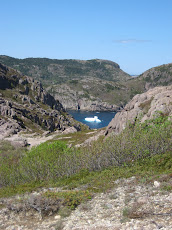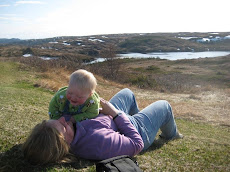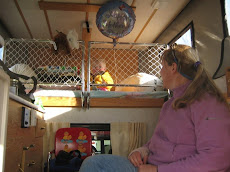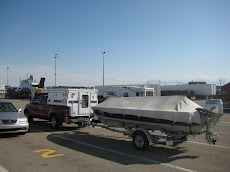Newfoundland is all about fish (remember, in Newfoundland, fish equals cod; otherwise, Newfoundlanders call it by its common or colloquial name). It was founded on fish. Until 1992, the economy was driven by fish. Most people lived on the coast because of the fish. The local calendar revolved around fish. You get the picture. Whalers have also referred to whales as fish (although probably not Newfoundlander whalers, otherwise they would have called them something else)…so, even though they are mammals, there is that.
Capelin are a smallish fish, distantly similar to Mackerel, and about the same size, too (about 6-8 inches, or about 15-20 centimeters). The Capelin are an important part of the food chain. Capelin runs generally start in early summer, some time in June. You know the Capelin are running because the seabirds are going crazy catching and eating them, the whales arrive and go crazy catching and eating them, and the locals go crazy catching and eating them.
I have gone on a lot of whale watches in my life, but I have never seen whales like I have in Newfoundland!
Saturday we went out on an ecotour with Gatherall’s Puffin & Whale Watch out of Bay Bulls. What a contrast to all of the other bird and whale tour boats I have been on in my life! Quite literally, within minutes of leaving their pier we saw a pair of Minke Whales and a brace of Fin Whales. We didn’t even slow down (every other whale-watch I have been on would have stopped to milk either of these sightings for all they were worth) as we were going on to better whale watching territory.
By the time we reached the head of Bay Bulls, a mere ten minutes from the dock, we were in Humpback Whale heaven! A mother/calf pair were right next to us. Another pair of Humpbacks were within a few hundred meters. As I scanned the horizon with my binoculars, nearly every field had at least one whale; at one point, I had five whales in the field of view. Later, Natalie and I agreed that there were easily between 20 and 30 whales.
We continued on to the Witless Bay Islands Ecological Reserve to look at seabirds. This is the second largest colony of Atlantic Puffins in Newfoundland, with nearly 800,000 birds! The grassy upland slopes are stippled with their burrows. It is amazing to think that this little ten-inch football with wings can dig a four-foot burrow in which to lay its eggs. In addition to the puffins, there are cliff-nesting Black-legged Kittiwakes, Common Murres, Razorbills, Guillemots, a lone pair of Northern Fulmars; oh, and the largest colony of Leach’s Storm-Petrels in the world! Well over one million birds in this reserve!!!
And to top it all off, there were Gatheralls and crew ranging in age from about 10 to perhaps 50, and many of them sang sea shanties and other appropriate ballads. Even the daughter, whom I took to be about 10, and her friend sand a wonderful a cappella duet.
After the tour we continued down the Avalon shore and found a little RV park south of Tors Cove. Given our predilection for wilderness camping, the park was uninspiring: it was all mown flat, covered in gravel, with no natural screening between the dozen sites. We almost chose not to stay, but it was getting on in the evening, time to make Anouk so supper. All of the sites overlooked the southern end of the Witless Bay Islands Ecological Reserve. As we were driving the COW (Cabin on Wheels) to our site, we saw a blow! Humpback Whale! And another! And another! And another…. They were everywhere! We barely were able to focus on dinner for all of the whale sightings, easily 20 whales!
Sunday we made our way to Cape Race. This is the southernmost point of Newfoundland, with treacherous currents, countless shipwrecks, and fog that defines fog. We drove 19 kilometers out a dirt road to the Cape Race light. There is a small interpretive center focused on their history as a communications center, including the first Marconi in the late 1800s (or was it early 1900s?). We also scaled the 84 steps to the top of the lighthouse. We had no visibility, but that just enhanced the feeling of being remote.
We gravel-pit camped about halfway back on the dirt road near the Rookery. Monday morning dawned sunny and clear. From our campsite we were mesmerized by whales. We set up the spotting scope and saw Fin Whales, Humpback Whales, and a pod of unidentified dolphins. It was so hard to know where to look there were so many whales. We eventually broke camp and made the short walk in to the Rookery. We were up on a cliff, perhaps 200 feet above the ocean, looking down on thousands of Black-legged Kittiwakes nesting on the tiniest of ledges. The water was littered with alcids, mostly Razorbills, Atlantic Puffins, and turres (the local name for Commone Murre, a food favored by Newfoundlanders). And yes, there were whales everywhere!
It was difficult to pull ourselves away, but we wanted to go on to St. Vincents. Well, that was the plan. We got back to the COW and had a flat tire. DRAT! Fortunately, Toyota loads their Tacomas with a full-size spare.
We eventually made it to St. Vincents and, once again, the whales were everywhere…with one difference: these guys were within spitting distance of shore! We had perfect viewing conditions, too. Apparently the water drops off quickly, which allows the whales to come right on in. The Capelin were definitely running, at times making the water boil. Think about it: there has to be enough Capelin to feed the hundred, maybe thousands, of whales, as well as the millions of seabirds, while still maintaining enough of a population to sustain itself.
Although St. Vincents and area has not capitalized on marketing their whales, the locals enjoy it. In fact, they flock to the beach to watch the whales. It is a real social event for them.
The birds flock to the beach, too. There were hundreds of Northern Gannets, plunge diving into the schools of Capelin, at times mere feet from the shore! And thousands of kittiwakes!
At one point, Tom Hince, a bird tour operator out of Point Pelee, Ontario, showed up with his group. We had met them two days before when I saw a bunch of birders on the side of the road, scopes set up, scanning the islands of the Witless Bay Islands Ecological Reserve. They told me of a reported Little Gull in the neighborhood (no, I did not find it…DRAT!). But I did add White-winged Scoter and Spotted Sandpiper.
During supper (dinner is what Newfoundlanders call lunch), falafel and sweet potato, which we ate at one of the picnic tables at the beach, we had the scope set up to watch the whales. Shortly afterward, the offshore fog bank rolled in quickly. As it was rolling in toward the beach, I saw a line of black birds flying low to the water just in front of it. Being so close to shore, I automatically assumed they were scoters, but their wings were all wrong: they were long and narrow…like a pelagic bird. And then I realized that they were Sooty Shearwaters! Hundreds, possibly thousands of Sooty Shearwaters flying parallel to the beach in front of the fog bank, which at this point was a mere 50 feet from shore and rolling in.
We camped in the parking lot of this beach and all night long we were serenaded by the sounds of whales blowing just off the shore.
A Downy Woodpecker seen during the day Monday helped my bird list.
Total bird species: 92
Wednesday, July 09, 2008
Subscribe to:
Post Comments (Atom)



































2 comments:
I am so jealous, yet very happy for you and all you have been able to see. Now I really need to make sure we get to Newfoundland at some point. Keep having fun and enjoying all the little things.
Jenn and Terry
Can't wait until we come and visit.
Hope your back is better. I know the feeling I had the same symptoms and had to have physical therapy.
Renny
Post a Comment